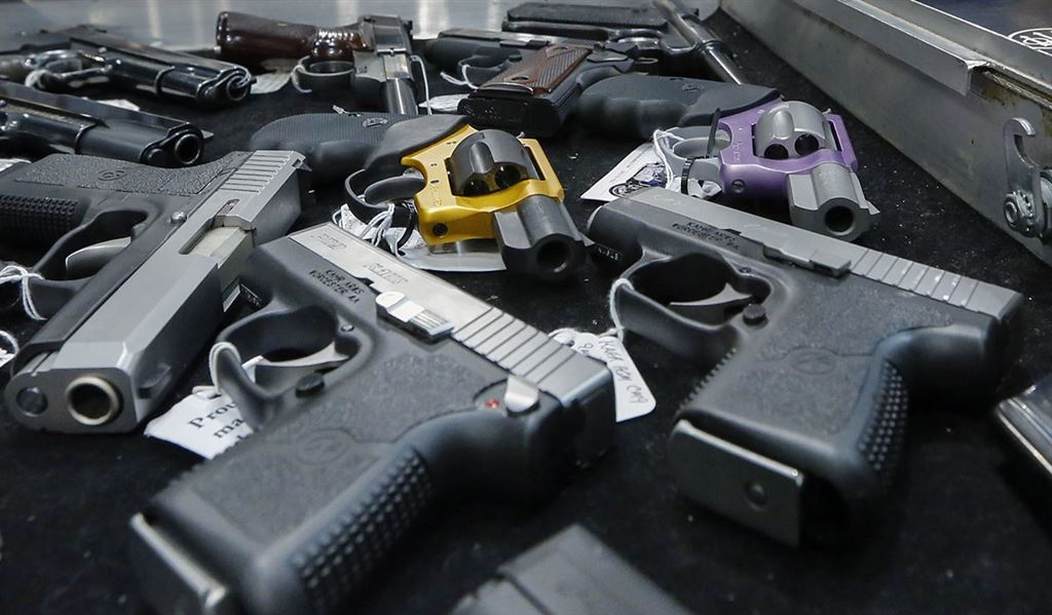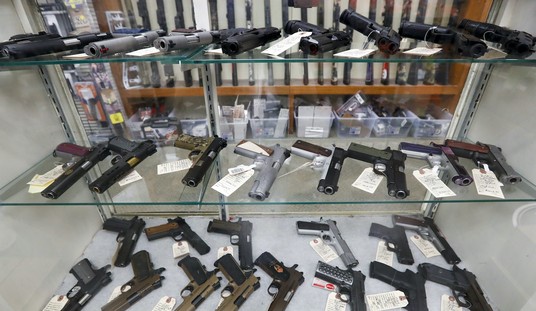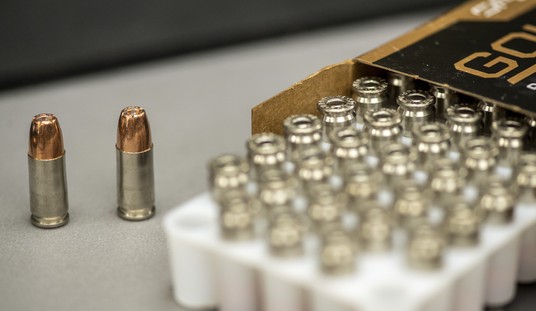It’s going to be nearly impossible to address and report on every single solitary bit of non-sense that’s coming from the anti-freedom caucus as we approach November 3rd. Next Wednesday has been marked up as a proverbial “judgement day” for those who wish to keep the citizenry unarmed, as the arguments in NYSRPA v. Bruen will be delivered.
It’s almost as if the concerted effort and universal message from those that wish to enact their will on others, is that what they say will somehow be gospel if they repeat it enough. That might be true about lies, repeating them enough they become fact, but at least in this country we do have legal precedent and historical accounts to lean on. Versus the very scientific “feelings” which the freedom-grabbers use to “prove” their often baseless claims. Take for example an Assistant Professor of Law from Southern Methodist University and his claims:
The stakes in one of the most significant Second Amendment cases in U.S. history are high.
The Supreme Court’s ruling in New York State Rifle & Pistol Association v. Bruen, expected by mid-2022, could declare a New York state restriction on carrying concealed handguns in public places unconstitutional.
Such a ruling in favor of the plaintiffs, which include a National Rifle Association affiliate, could loosen gun regulations in many parts of the country.
Ruben, the Assistant Law Professor must not have gotten the memorandum about other “most significant Second Amendment cases in U.S. history.” Yes, he’s correct in asserting that the stakes are high, however this is beyond dramatic. I don’t know if Ruben studied Heller in law school himself, or if they talk about Heller, at Southern Methodist University, but I’d say that case was pretty significant.
We all know that Heller and subsequently McDonald dealt with the complete prohibition of the possession of handguns in certain jurisdictions. I think a complete prohibition trumps the fact that the Bruen case only really applies to the last few hold-out bad actors that don’t recognize the Second Amendment in its full form. How many states is that really? By the books, we’re talking about nine states that are “may-issue” when it comes to carry permits. Of those nine states, the worst offenders on actually not issuing permits, or having really bad jurisdictions that don’t, are: California, Hawaii, New York, and New Jersey. Those four states are the worst offenders.
To have Ruben say that “a ruling in favor of the plaintiffs…could loosen gun regulations in many parts of the country” leads me to believe he needs to go to geography class. Four states is not “many parts of the country”. Mathematically that’s 4/50 or 2/25 or 8%. I can see 8% equating to “many parts.”
Ruben reassures us though.
In my view as a Second Amendment scholar, this case is also noteworthy in that how the court reaches its conclusion could affect the Second Amendment analysis of all weapons laws in the future.
Sir, agree this can affect the Second Amendment analysis of weapons laws in the future. I can hardly accept you as a “Second Amendment scholar”. If you’re a “scholar”, who owns you and funds your “research”? Your analysis is biased. Turn in your sheepskin or get a refund. Our scholar goes into the history:
In 1911, after an increase in homicides, New York instituted a handgun permitting system. In 1913, the permitting system was amended to address concealed carrying.
For more than a century, someone seeking to carry a concealed handgun for self-defense in the state has needed to file a permit application showing that they have what the law calls “proper cause.”
To obtain an unrestricted permit, applicants must “demonstrate a special need for self-protection distinguishable from that of the general community,” such as by showing they are being stalked.
Yes, in 1911 the Sullivan Act. was implemented in New York. For those of you looking for a “scholarly” way of presenting that information, you now know it’s called the Sullivan Act. The history of this section of law is much more complicated than “an increase in homicides”. More accurately, it’s laid out in this Post article:
In 1911 — in the wake of a notorious Gramercy Park blueblood murder-suicide — Sullivan sponsored the Sullivan Act, which mandated police-issued licenses for handguns and made it a felony to carry an unlicensed concealed weapon.
This was the heyday of the pre-Prohibition gangs, roving bands of violent toughs who terrorized ethnic neighborhoods and often fought pitched battles with police. In 1903, the Battle of Rivington Street pitted a Jewish gang, the Eastmans, against the Italian Five Pointers. When the cops showed up, the two underworld armies joined forces and blasted away, resulting in three deaths and scores of injuries. The public was clamoring for action against the gangs.
Problem was the gangs worked for Tammany. The Democratic machine used them as shtarkers (sluggers), enforcing discipline at the polls and intimidating the opposition. Gang leaders like Monk Eastman were even employed as informal “sheriffs,” keeping their turf under Tammany control.
The Tammany Tiger needed to rein in the gangs without completely crippling them. Enter Big Tim with the perfect solution: Ostensibly disarm the gangs — and ordinary citizens, too — while still keeping them on the streets.
In fact, he gave the game away during the debate on the bill, which flew through Albany: “I want to make it so the young thugs in my district will get three years for carrying dangerous weapons instead of getting a sentence in the electric chair a year from now.”
I don’t expect Ruben to be reading the New York Post, however I do expect him to be familiar with the facts laid out in the extensive piece. The piece gets at the crux of all the issues in may-issue systems:
Sullivan knew the gangs would flout the law, but appearances were more important than results. Young toughs took to sewing the pockets of their coats shut, so that cops couldn’t plant firearms on them, and many gangsters stashed their weapons inside their girlfriends’ “bird cages” — wire-mesh fashion contraptions around which women would wind their hair.
Ordinary citizens, on the other hand, were disarmed, which solved another problem: Gangsters had been bitterly complaining to Tammany that their victims sometimes shot back at them.
Yeah, convenient. This all speaks for itself and holds true today.
What else did Ruben have to say in his love-letter to anti-freedom?
In considering Bruen, the Supreme Court will focus on the meaning of an important precedent: District of Columbia v. Heller.
When the Supreme Court issued its Heller ruling in 2008, a 5-4 majority struck down Washington, D.C.‘s ban on the possession of handguns in the home. The court held for the first time that the Second Amendment protects an individual’s right to keep and bear arms.
This is where we’re going to have to part ways widely dear sir. True, in Heller, it was the first time THE COURT held the Second Amendment protects an individual’s right to keep and bear arms. That’s because prior to that, the matter did not really surface. At least not in such an in your face kind of way. This leaves me to wonder if Ruben, or any of the anti-freedom caucus members have ever actually read the Second Amendment. I know there is so much squabbling over this “militia” thing and what on earth “regulated” means, but that does not change the largest portion of the amendment, the who. Who’s rights shall not be infringed?
…the right of the PEOPLE to keep and bear arms shall not be infringed.
I don’t know how much more plain English the founders could have made that statement. The progressive push to say that the Bruen case may reduce restrictions and all this other hogwash is grossly inaccurate, as the court has an opportunity to right a wrong. A restoration of rights that were infringed upon for over a century. Any “scholar” should be able to figure that out.
No anti-freedom caucus rant would not be complete in 2021 if somehow Trump was not brought up. Kudos! Ruben for working that in there.
Chief Justice John Roberts has steered his colleagues toward narrow rulings before. But he will hold little sway if the three justices former President Donald Trump appointed team up with Samuel Alito and Clarence Thomas, the court’s two other conservatives, on a far-reaching majority opinion.
Trump conferred with the NRA before nominating Gorsuch, Kavanaugh and Coney Barrett – all of whom received the gun group’s blessing.
The ruling will underscore the significance of their presence on the court.
Yes Eric, this is significant. It’s also sad. It’s sad it took Trump to step up to the plate and find justices that are willing to read the plain language of the amendment, and possibly hold that it’s meaningful. I’m quite interested in Ruben’s scholarly view on the matter of this case after an opinion. I’m always in need of a good chuckle.
We’ll have to see. Waiting until June of next year or so is much better than the 100+ years of infringement we’ve been dealing with. At least we’ll know where we stand…as citizens or subjects.








Join the conversation as a VIP Member